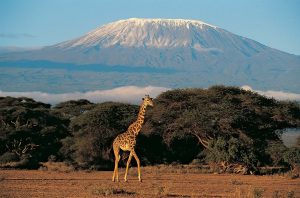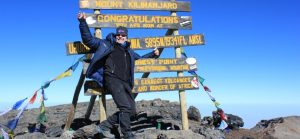Understanding the Altitude of Kilimanjaro Ascent
Factors Influencing Altitude Gain on Kilimanjaro
As one of the Seven Summits and the tallest peak in Africa, Mount Kilimanjaro stands at an impressive 19,341 feet above sea level. Climbing this iconic mountain is a dream for many adventurers, but reaching the summit comes with its own set of challenges, the most significant being the altitude gain.
Altitude sickness, also known as acute mountain sickness (AMS), occurs when climbers ascend to higher altitudes too quickly and their bodies are unable to acclimatize properly. The lack of oxygen at high altitudes can lead to symptoms such as headache, nausea, fatigue, and dizziness. To understand how to mitigate the risks associated with altitude gain on Kilimanjaro, it is important to consider the factors that influence it.
One of the key factors affecting altitude gain on Kilimanjaro is the speed of ascent. Climbers who attempt to reach the summit in a shorter amount of time are more likely to experience altitude sickness. It is recommended to choose a longer route, such as the Lemosho or Machame routes, which allow for better acclimatization and increase the chances of a successful summit.
Another factor to consider is the altitude of the camps along the route. Climbers should aim to gradually increase their altitude each day, allowing their bodies to adjust to the decreasing levels of oxygen. Choosing a route with well-spaced camps, such as the Northern Circuit route, can help climbers acclimatize more effectively.
Lastly, individual factors such as age, fitness level, and previous altitude experience can also influence altitude gain on Kilimanjaro. It is important for climbers to be honest with themselves about their abilities and to listen to their bodies throughout the ascent.
Strategies for a Safe and Successful Ascent to the Summit
To ensure a safe and successful ascent to the summit of Kilimanjaro, climbers should follow a few key strategies:
-
Choose the Right Route: Selecting a longer route with gradual altitude gain, such as the Lemosho or Machame routes, can increase the chances of successful acclimatization.
-
Pace Yourself: Climbing slowly and steadily can help prevent altitude sickness. It is important to listen to your body and take breaks as needed.
-
Stay Hydrated and Well-Fed: Drinking plenty of water and eating nutritious meals can help combat altitude sickness and maintain energy levels.
-
Acclimatize Properly: Take time to rest and acclimate at each camp along the route. Climbing high and sleeping low can also aid in the acclimatization process.
By understanding the factors that influence altitude gain on Kilimanjaro and following the recommended strategies for a safe and successful ascent, climbers can increase their chances of reaching the summit and fulfilling their dreams of conquering Africa’s highest peak.
For those interested in embarking on this unforgettable journey, Sunset Africa Safari offers guided tours to Mount Kilimanjaro. For booking requests and more information, please contact info@sunsetafricasafari.com.



